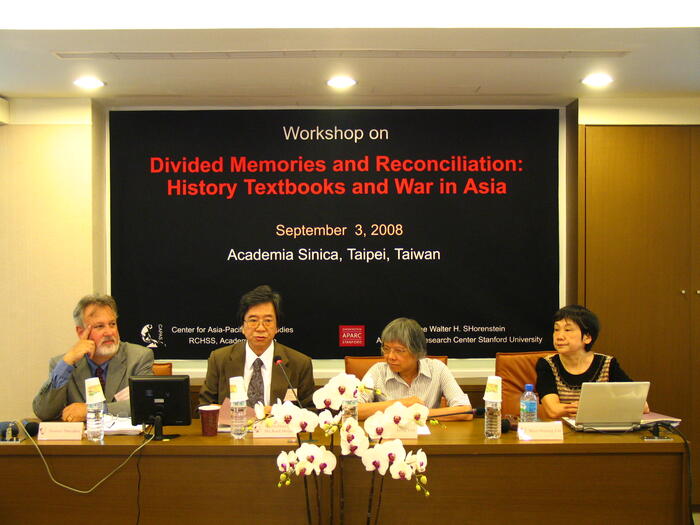The disputes over the South China Sea are complex, and they overlap and collide in complex ways. At stake are questions of ownership, demarcation, rights of passage, and access to resources—fish, oil, and gas. The resulting imbroglio implicates all six claimants, not only China but Brunei, Malaysia, the Philippines, Taiwan, and Vietnam as well. It is wrong to blame China alone for all that has happened in the South China Sea—nationalist moves, stalemated diplomacy, and the potential for escalation.
That said, no other claimant has come even close to matching the speed and scale of China’s efforts. In just two years, unannounced and unilateral acts of dredging and reclamation have created more than 3,200 acres of usable hard surface on the seven features that China occupies in the Spratlys. Ports, runways, buildings, and barracks have been built to accommodate military or civilian ships, planes, and personnel. Radar systems have been installed. Floating nuclear-energy platforms are envisioned.
Seen from Beijing, these are not matters of Chinese foreign policy. Under Chinese law, most of the South China Sea is part of Hainan province—in effect, a Chinese lake. In Beijing’s eyes, these vast waters and their bits of natural and artificial land are already in China’s possession and under its administration—a conviction embodied in the ban on foreigners who fish in them without China’s prior permission.
Without prior notification, surface-to-air missiles have been placed on Woody Island in the Chinese-controlled Paracels. Beijing may build Scarborough Reef into a third platform, completing a strategic triangle with the Spratlys and the Paracels. The resulting network of bases could undergird the declaration of an air defense identification zone designed to subject foreign aircraft to Chinese rules. These prospects cause anxiety not only far away in the United States, but also and especially nearby in Southeast Asia.
Malaysia, the Philippines, Taiwan, and Vietnam have also built on land features they control, including laying down runways. Southeast Asian claimants, too, have “legalized” their claims, as has Taiwan. Malaysia has turned an atoll in the Spratlys into a tourist resort. But these efforts have been dwarfed in quantity and quality by the massive and military dimensions of China’s campaign to push its southern boundary farther south and to augment and repurpose the rocks and reefs that it occupies or surrounds inside that new if officially still inexact national limit.
What does Beijing want in the South China Sea? The answer is: control. That answer raises additional questions: Will China actually gain control over the South China Sea? If not, why not, and if so, how? How much and what kind of control? Among varieties of dominance from the least to the most oppressive, many qualifying adjectives are possible. Minimal, superficial, selective, extractive, patronizing, censoring, demanding, suppressive, and despotic are but a few that come to mind, and fluctuations over time are possible across this spectrum from smiles to frowns in either direction.
For Asia and the wider world, the relevance of these uncertainties is clear. But the original, primary question—what China wants—can be retired, at least for now. It has been answered by China’s behavior. The notion that the government of China does not know what it wants in the South China Sea is no longer tenable. Its actual behavior says what it wants. It wants to control the South China Sea.
Obviously that body of water and its land features are not coterminous with Southeast Asia, nor with East Asia, Asia, Eurasia, or the Asia-Pacific, let alone the world. One can only speculate whether and how far the goal of control applies across any, some, or all of these concentric arenas of conceivable ambition. In those zones, why China wants control is still a fatally prejudicial—presumptive—question.
Not so in the South China Sea. In that setting, knowing the subjective motivations, objective causes, and announced reasons for Beijing’s already evident pursuit of control could help lower the risk of future actions and outcomes damaging to some or all of the parties concerned, not least among them China itself.
Three Fears and a Project
One answer to this “why control?” question runs thus:
Chinese historians who reflect on what China calls “the century of humiliation” know that the Western powers—British, French, American—entered China in ships across the South China Sea. It makes sense that China today, with that memory in mind, would want to protect its underbelly from maritime assault. Ignoring whether 19th and 21st century conditions are alike—they are not—one can then argue that China has been busy installing itself in the South China Sea for defensive rather than expansive reasons. Why not develop a forward position to discourage an American invasion? That is a generous interpretation of Beijing’s intent.
Less generously: The United States is not about to attack China, by sea, land, or air, and Beijing knows it. It is precisely that knowledge that has allowed China to entrench itself so successfully, acre by acre, runway by runway, missile by missile, without triggering a truly kinetic American response. Americans are still significantly involved in violent conflicts in Afghanistan and the Middle East. Americans are tired of war. Washington knows that it needs to cooperate with Beijing. Among the surviving would-be presidents, Hillary Clinton regrets voting for the Iraq War; ex-conscientious objector Bernie Sanders opposes war; and Donald Trump says he makes deals not wars. If Sino-American bloodshed is so unlikely, why would China want to militarize the South China Sea to defend itself against the U.S.?
Perhaps Beijing is trying to deter a threat that falls short of war, namely, containment. But Sino-American interactions are too many and too vital for an American president to want to quarantine the world’s most populous country and second-largest economy, even if that were possible, which it is not. The Obama administration wants China to be constructively engaged with others inside the existing global political economy. A cooperative, responsible China is in the interest of the United States and the planet.
Alongside war and containment is a third possible fear in Beijing: jingoism from within. China’s rulers have for years claimed nearly all of the South China Sea. They may now feel domestically pressured to deliver on that promise of possession, lest patriotic-populist nationalists in Chinese society fault them for not pushing the U.S. Seventh Fleet back toward Guam, if not beyond. Unrequited hyper-nationalism could doom the regime. But just how widespread in society is such a viscerally expansive view?
An April 2013 survey of Chinese public opinion by Andrew Chubb yielded surprisingly peaceable majorities of 61 and 57 percent who favored, respectively, “submitting [the South China Sea dispute] to UN arbitration” and “negotiating [the dispute] to reach a compromise.” In the same poll, however, a plurality of 46 percent did advocate “directly dispatching troops and not hesitating to fight a war.” There is also a chicken-or-egg question of causation: To what extent are adamantly nationalistic public opinions the officially fostered products of the government’s own inflexible—“indisputable”—positions? When Beijing builds ramparts in the South China Sea and challenges American ships and planes, is it hoping to replace destabilizing local grievances—air and water pollution, unsafe food, land seizures and evictions—with supportive pride in China’s maritime clout?
The patrolled opacity of China’s political system makes it hard to assess these hypothetical explanations of Beijing’s campaign to control the South China Sea. One, two, or all three of these rulers’ fears may variously feed Chinese bellicosity. But why should anxieties alone motivate Beijing? A fourth hypothesis sources Chinese behavior less in preemptive trepidation than in an optimistically proactive and renovating desire to establish a new Middle Kingdom that will enjoy primacy in Asia, parity with the United States, and eventual centrality throughout the world. Off-shore dominance in an area ringed by smaller, weaker states may be viewed by Beijing as a requisite step forward toward those more ambitious and longer-run versions and extensions of control. Among China’s regional inventions, the 21st Century Maritime Silk Road, the Asian Infrastructure Investment Bank, and the Xiangshan Forum may point in that direction.
Summary and Interpretation
Three fears and a project hardly exhaust the possible answers to the motivational question, nor are they mutually exclusive, and they do not conveniently sort themselves by order of importance. But they can be characterized and compared. The fear of re-humiliation harks backward; the fear of containment looks outward; the fear of disaffection turns inward. The project of renewal alone gazes forward. The fears may be necessary, but none is sufficient. If the Opium Wars had never been fought and lost, the autocratic leaders of China today would still have reasons to worry about the United States and their own people. If Obama’s “rebalance” to Asia had never occurred, China’s rulers would still remember history and fear disorder. In the absence of social unrest, temptations to avenge the imperialist past and challenge American supremacy would not disappear.
At the neuralgic core of each fear is a loss of control. What they collectively lack is a positive undertaking to establish control. In this sense, the fears rely on the project to achieve their satisfaction, just as the project needs the fears to motivate its execution. But the project is more than the sum of the fears. The positive vision of a Sinocentric order that overcomes the fears is itself also a motivation. If the fears push, the project pulls. Agree or not with this interpretation, it may merit preliminary attention when facing a less intellectual, more existential, and more prescriptive question posed by China’s maritime resolve. Aptly in view of China’s past, it is Lenin’s question: What is to be done?
Donald Emmerson is director of the Southeast Asia Program at the Shorenstein Asia-Pacific Research Center and a senior fellow emeritus in the Freeman Spogli Institute for International Studies.
This editorial was originally carried by The Diplomat on May 24, 2016, and reposted with permission.






